
Ice Climbing
BeginnerMountaineering
BasicHiking
BeginnerRock Climbing
BeginnerBackcountry Skiing
BeginnerLuba Pershina
50 years, Russia
Top 5 Trekking Routes in Cusco Region, Peru. Why Your Trekking Time is Limited?
When it comes to trekking in Peru, this country seems to have been created definitely for this kind of outdoor activity. Routes are various: thanks to an endless number of beautiful mountain landscapes, sub climatic belts; high altitude and mid altitude ridges, and a diversity of rivers and lakes. But at the same time, there is a complication, or rather a danger: too many tourists.
Why exactly Cusco Region? Because it is the first and the most suitable opportunity for many people who begin their way in the outdoors.
This is an opportunity to:
1) Go to a simple trek in the mountains.
2) Trek in an easily accessible area, which can be quickly reached from several ways.
3) Easy access to the mountains.
4) And most important: in addition to the outdoors, here you can get closer to the richest culture of Peru.
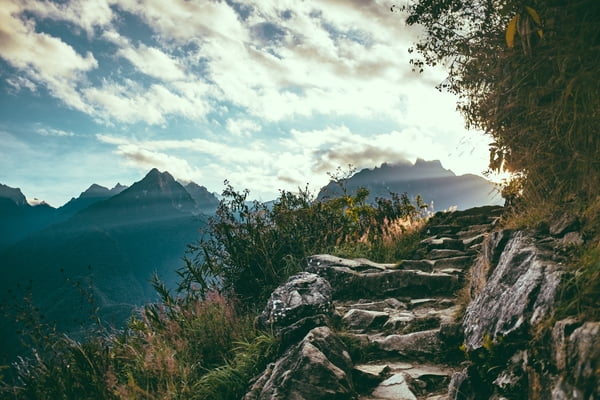
Photo: Ashim D Silva for Unsplash
This region is the historical and cultural center of the country. Therefore, for those who begin their acquaintance with Peru and want to trek in the mountains, the Central Andes, Cusco is the most suitable place to start.
Once, I was engaged with Social Anthropology (specifically Anthropology of Tourism) and studied the Ecology of Tourism from professional ecologists point of view. Ecologists have the notion of “carrying capacity”, the ability of an ecosystem of a certain region to stand without damaging itself, with a certain number of people on its territory. According to the “capacity of the ecosystem and the cultural system”, the Cusco region in Peru is on top of this emergency list. Tourists and those locals assisting them overcrowd the region. And this also affects tourists, who perceive a certain level of cultural and natural values. These values are now in danger. But if we want to see them anyway, what should we do? If you want to see the monument, you also need to see the nature and culture standing behind it.
1. Machu Picchu and the Inca Trail
Photo: Jair Garciaferro for Unsplash One of the most beautiful treks in the world; the so called “Inca Trail” (“Camino Inca” in Spanish) is currently the most popular route in South America and one of the top-5 in the world. And this affects the number of tourists wishing to take it. Back to 2001, when the Peruvian government banned entry free to the route, it was possible to buy the ticket one week in advance. Now you have to buy it 3 months prior to, and even 4 months in advance during the high season. Each day there are no more than 500 people on the route at the same time and 200 of them are tourists. This limitation is aimed to preserve the nature and culture of the trail. The main attraction awaits you at the end: the ancient citadel of the Incas, Machu Picchu. Honestly, photos aren't trying to sell you something, and when you will see the place with your own eyes, you will understand that all the shots are way worse than the reality! And the path itself with the Inca ruins and heavy growth along the changing highlands, with the views of snow-covered peaks of mountain range Urubamba, is also an interesting object of both natural and cultural heritage. The so called “Cloud Forests” on the route are worth it! Nowadays, the Inca Trail needs a break because of the insane number of people wishing to contemplate all this and touch these places. By the way, most of the trail is a path, laid out by Incas by the original stones. That it is: you walk through an archeological museum showpiece. Therefore, what can we do to get through it, enjoy it, but leave as few footprints as possible? First of all, do not come during the high season in order not to trample down along with hundreds of people. Come in October, December and even February! Perhaps you could be afraid of the rain, but the impression, believe me, will remains the same bright! Besides, the citadel of Machu Picchu, for example, in February, looks much more attractive than in July. In July the grass is yellow and burned by the sun, while in February it is bright green next to the blue sky (with some clouds, of course).
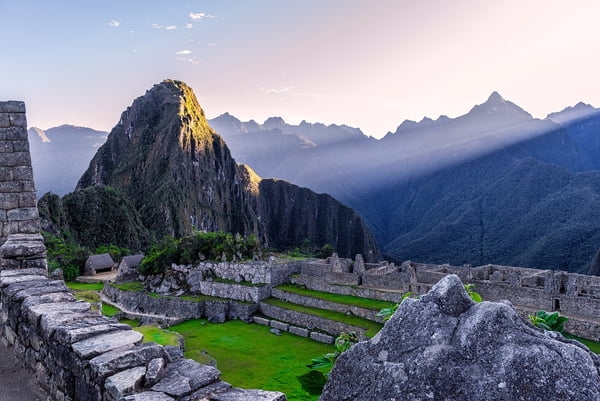
2. Lares Valley Trek to Machu Picchu
Photo: Colby Thomas for Unsplash One of the first alternatives to the classic Inca Road is the so called Lares Trek. And this is really a very good option and an easier route in terms of difficulty. It does not have such a large altitude difference as on the classic Inca Road, but there are small Indian villages with the herds of llamas and alpacas, grazed by locals. This ethnic component is highly valuable on this short route, which cross high another enough pass — Ipsaycocha Pass (4450 m). One more thing, there are several variants of the Lares Trek (3 basic and 2 additional), less logical and “cultural”, but not devoid of beauty. And yet, this trek is sometimes called “The Ultimate Cultural Trek” in Peru. Apparently, it is meant that the cultural ethnic component — acquaintance with the untouched life of the Andes Indians, presenting in this area of the Central Andes, is one of the last in this region. And it is this Indian cultural component that is under threat: in 10 years more it will be impossible to plunge into the life of an Indian village and simultaneously take such a beautiful and uncomplicated trekking route. Apropos this route is often called “Lares Trek to Machu Picchu”. And it is not true! It's impossible to reach Machu Picchu from the area of this trek. After descending from the route, you need to get to Ollantaytambo station by car; take a train until the town of Aguas Calientes. Once there, you can walk to Machu Picchu. But in any case, this trek is worth it, especially if you are a beginner. Lares Trek is full of mountain landscapes with white snow-capped peaks, llamas and alpacas, local Indian women weaving multi colored wool products, fantastic forests of endemic Myroxylon trees on pass descent, and a green mountain lake. It includes generally everything that can be seen on a good short mountain route. If you are taking your first steps into the outdoors, go ahead!
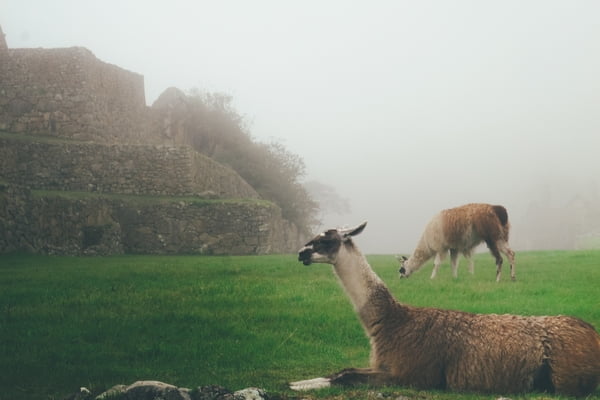
3. Salkantay Trek to Machu Picchu
Photo: Flo P for Unsplash Trekking Salkantay is considered (according to some sources) one of the top 25 trekking routes in the world. This route, unlike the previous one, actually leads almost to Machu Picchu itself, and gives a chance to see the citadel from an interesting unexpected perspective. Here is an advice: go all the way to the end on foot, without taking the train on a light railway trek. The train will carry your belongings, and you can travel along the Urubamba River, surrounded by tropical greenery and orchids, overlooking the inaccessible cliffs, to the impregnable citadel of Machu Picchu. But this will be at the end of the route, and it is a classic trekking with a pass crossing of 4600 meters high at the beginning, at the foot of a high mountain, with rocky trails and not very good weather possibly. But it's worth it! Variety of landscapes and vegetation, from high-altitude paths to banana and coffee plantations; and different climatic conditions — from the cold mountain pass to the subtropics — just in 3 days. This trek is recommended for already experienced travelers, who are ready to face the altitude changing near the Apu Salkantay mountain (one of the divine “assist” mountains for local Indians). This mountain is not easy and, they say, it is not so simple to cross this pass, because the Apu Salkantay may could not let you cross it. And on this route one can see firsthand the changing of the environment under the influence not only tourism, but simply of the industrial development of the region. Almost the entire route of the last two days, starting from the Yanama Pass, goes through the terrain, already changed under the influence of civilization. The active construction of roads, the developing work of the hydroelectric power station improvement — all this makes the route especially not so “environmentally friendly” as we would like. Sometimes at the same time on the route you can see up to 20 tourist minibuses. Here is an advice: gather strength and climb the route (about 3,5 hours) to the place of Llactapata from above, to contemplate the ruins of Machu Picchu almost at the level of your eyes; but don't take the long way down, as it is too busy. Second advice: once again gather strength and pass (instead of taking a train) along the path to Aguas Calientes. You will see the most unique landscapes of the Machu Picchu region! Trekking Salkantay is worth to pass precisely because of the unusual perspectives of Machu Picchu, endemic flora and fauna, which you can only see after walking all the way through. You will have time to take the train on the way back to Cusco. In a couple of decades, perhaps the entire lower part of the trail will be completely occupied by roads, cars and equipment as the development of the region keeps growing. Go now, when you can enjoy the nature!
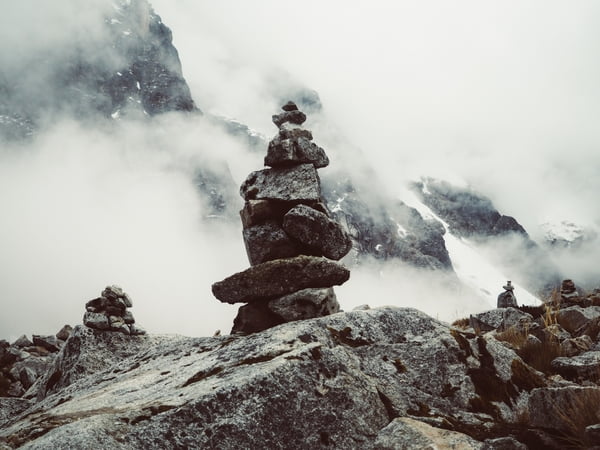
4. Trekking Choquequirao
Photo: Evening Standard Choquequirao is an Inca mountain fortress. Unlike Machu Picchu, it is a proper fortress. As a fortress, it's hard to get to than Machu Picchu, at least for modern people. It is also more interesting from the point of fortification, than some other Inca fortresses. This trekking route became popular thanks to the archaeological site of Choquequirao — one of the outposts of the warlike Incas, according to the deep beautiful canyon and the flights of condors, which can be observed along the way. From the height of the fortress there are stunning views of the canyon, the river, the surrounding mountains. The fortress itself is located on terraces, and very harmoniously fits into the closing landscape. The route is long and difficult: during the day the temperature can exceed +35°C and constantly decreases and increases. The climate is dry. And you have to cross the stormy river (in a special basket). There is another little disadvantage: the way back is the same you took to get there. This is perhaps the only non-circular trekking route in Peru. But exactly because of this, the trail is outstanding. You will remember these 3 or 4 days’ journey very well in two ways: while be able to observe the flying condors and contemplate the mountain peaks of Cordillera Salkantay. As you already know the route, the way back will be much easier. It's not all: as for now it is not allowed to build any road there, this route will remain untouched for many years and decades. But there is a chance of introducing horse rides to this route: the demand is always increasing, and many tourists don't want to walk. So horse rides could become the main transport of this route. At this point it won't be that pleasant to take it. So hurry up! Trekking of Choquequirao is for those who love extreme adventure but do not tolerate altitude very well (Choquequirao is only a little over 3000 m high). Although this route is not a concern for its preservation, there are always more tourists. It is worth spending 4 or 5 days of your life on a trip and visit the masterpiece of the Inca military architecture.
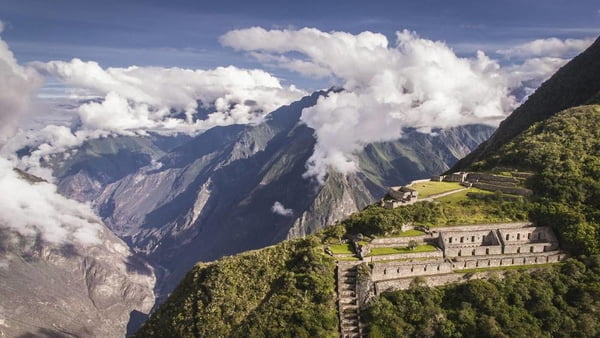
5. Ausangate trek
Photo: Jessica Knowlden for Unsplash Perhaps the most interesting trekking from a cultural point of view, combined with natural beauty and at the same time difficult in terms of altitude and climate. This is the highest and coldest trek in the Cusco region. Only few people can face Ausangate with comfort and pleasure, although too many wants to take this route. Several years ago it was discovered a new facility in the trekking area of Ausangate. It is the famous “Mountain of 7 Colors” or “Rainbow Mountain” (locally called Mount Vinicunca). Now hundreds of tourists visit it during a short one-day tour from Cusco. And it is included in some programs of Ausangate Trek (it should be a 6-day route). It is because of visiting this colorful mountain that many tourists and even beginners are dare to take a long 6-day trek. But this is a fairly serious altitude test: on route 3 the altitude is over 5000 meters and a few more than 4000. Testing with cold can also be severe, especially in the dry season from May to September. But most importantly, visiting this famous Rainbow Mountain Vinicunca at the moment can be considered an act of vandalism in relation to nature. You, together with hundreds of tourists slowly transform the mountain and the surrounding hills into a trampled amusement park. On a sunny day it is a beautiful sight. But is it worth to sacrifice the nature just for a beautiful picture for your Instagram? Photo: Xavier Argeles for Unsplash Therefore, if you still want to visit this area, prepare for other less high-mountain treks and come by the famous classic Trekking Ausangate (5-day trek). Blue and green lakes, stunning mountain peaks and Apu Ausangate itself, the sacred top of the Incas. Indian villages with the traditional way of life, herds of grazing alpacas (you won't see that many outside of Peru!) — all this will make your trek unique. Acquaintance awaits you here, with nature and the still authentic culture of the Andes Indians. But remember, we must preserve this beauty for our children!
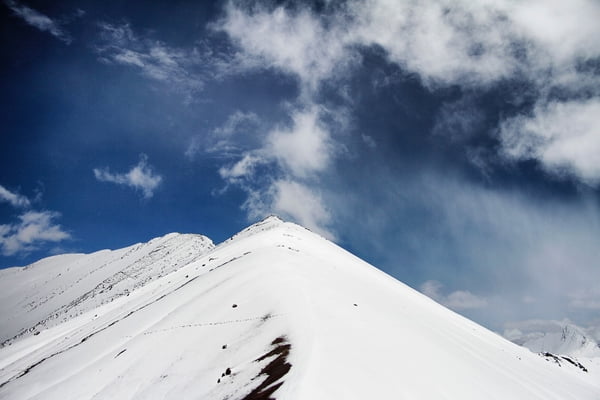

***
Mountain Planet is the world’s fastest growing online Alpine Community for outdoor enthusiasts and innovative brands. MountainPlanet.com is the ultimate information destination for everything outdoors and alpine. Our goal is to make mountains safer and more accessible to the people who love them all around the world.





